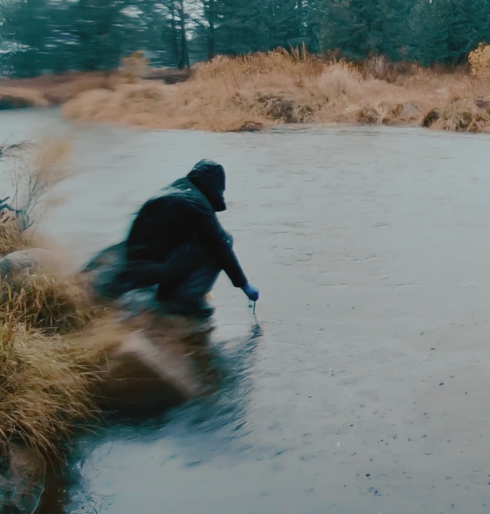On October 24th, during the storm driven by an atmospheric river, the League to Save Lake Tahoe’s staff and Pipe Keepers citizen scientist volunteers collected stormwater samples, made qualitative visual observations, and took quantitative measurements of water quality indicators, including turbidity. Participants monitored stormwater at 25 sites, including 16 stormwater pipes and 8 stream sites on Tahoe’s south shore that drain areas burned by the Caldor Fire.
Their work provided a snapshot of conditions at select sampling sites at a single moment in time, and therefore does not tell a complete story of how the October 24th storm, or any weather event since the Caldor Fire, has impacted the water quality or clarity of Lake Tahoe. Stormwater monitoring must continue – by agencies, research institutions and citizen scientists – and the results must be compared and synthesized over time to gain a conclusive understanding of the short and long term impacts on Lake Tahoe that may be occurring due to the Caldor Fire. The Pipe Keepers will continue stream monitoring monthly at 10 sites through at least June of 2022, with additional monitoring taking place as determined over the course of the project.
The initial readings from the Pipe Keepers’ work were unexpectedly positive (i.e. low turbidity measurements) given the intensity of the storm and precipitation on recently burned areas, but those readings are simply one set of measurements and data, not conclusions. Turbidity and nutrient concentrations, along with the volume and duration of stream flows, determine how much sediment, ash and nutrients are transported into Lake Tahoe.
Data collection by the League’s citizen scientists and staff follows standard methods and protocols, including quality assurance and quality control, to ensure validity, accuracy and the ability to compare with other monitoring efforts. The Pipe Keepers citizen science data collection complements the professional and robust water quality and stream flow monitoring that takes place through the Lake Tahoe Interagency Monitoring Program (LTIMP), which uses autosampler devices and stream flow gauges at fixed locations around the Tahoe Basin. The US Geological Survey and UC Davis Tahoe Environmental Research Center are very important contributors to the program, along with many others.
The Tahoe Science Advisory Council recently approved an expansion of the LTIMP program in light of the high probability that winter precipitation could move soils and ash off of slopes burned during the Caldor Fire and into the Lake. The League advocated for the expansion of LTIMP, knowing the data it produces would be crucial to understanding how wildfire can create delayed aftereffects for Lake Tahoe.
The contribution of Pipe Keepers citizen science data is additive to the LTIMP, particularly by providing visual observations and qualitative data that is not otherwise captured, including photographs and descriptive reports of the environment surrounding sampling sites. It also adds further measurements of nutrient loads and turbidity, which are determined through lab analysis. Citizen scientists have the flexibility to travel to different sites as needed, where autosamplers and stream flow gauges are fixed. Finally, citizen science engages the community directly in environmental science, which builds an ethic of environmental stewardship.
The collaboration between scientists, public agencies, research institutions, nonprofit organizations and community members will build understanding of the environmental impacts of wildfires, identify priority areas to address, and help implement solutions to protect, preserve and Keep Tahoe Blue.
The impacts of the Caldor Fire on Lake Tahoe are not yet fully known. Through the work of scientific agencies, research institutions, governments and citizen scientists, the impacts will be uncovered in time.
###
Media Contact:
Chris Joseph, League to Save Lake Tahoe
cjoseph@keeptahoeblue.org, 530.208.5661
The League to Save Lake Tahoe, also known by its iconic slogan “Keep Tahoe Blue,” is Tahoe’s oldest and largest nonprofit environmental advocacy organization. Our team of solutions-oriented Tahoe advocates use innovation, boots-on-the-ground action, and a holistic approach to solve the environmental challenges threatening the lake we love. In our 64th year, we continue pushing to Keep Tahoe Blue in an ever-changing world. Learn more at keeptahoeblue.org.


